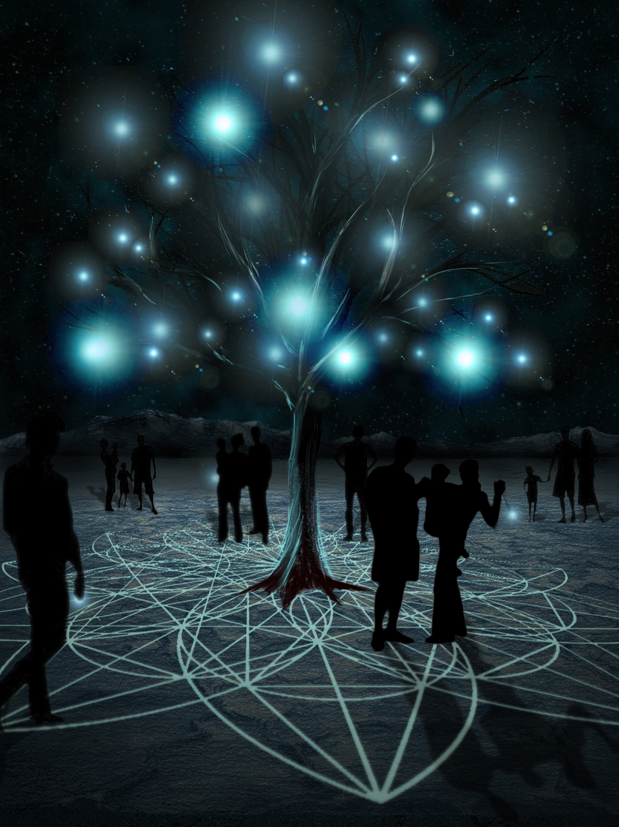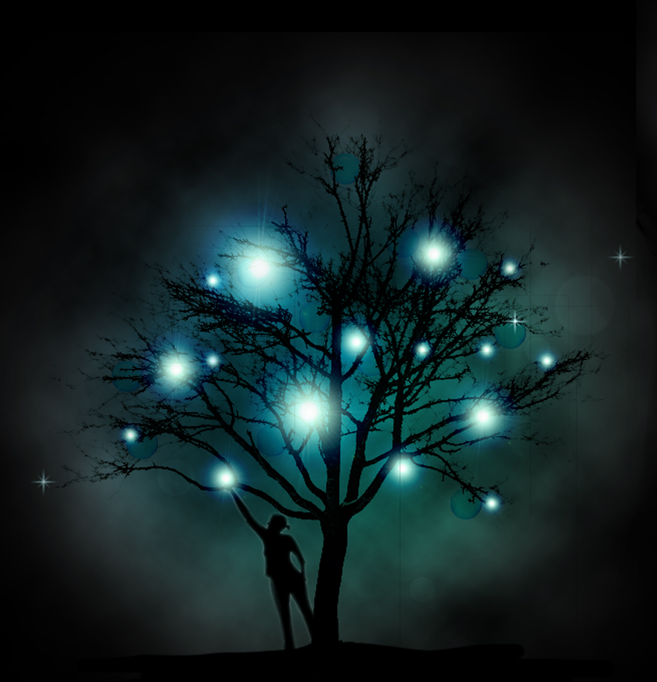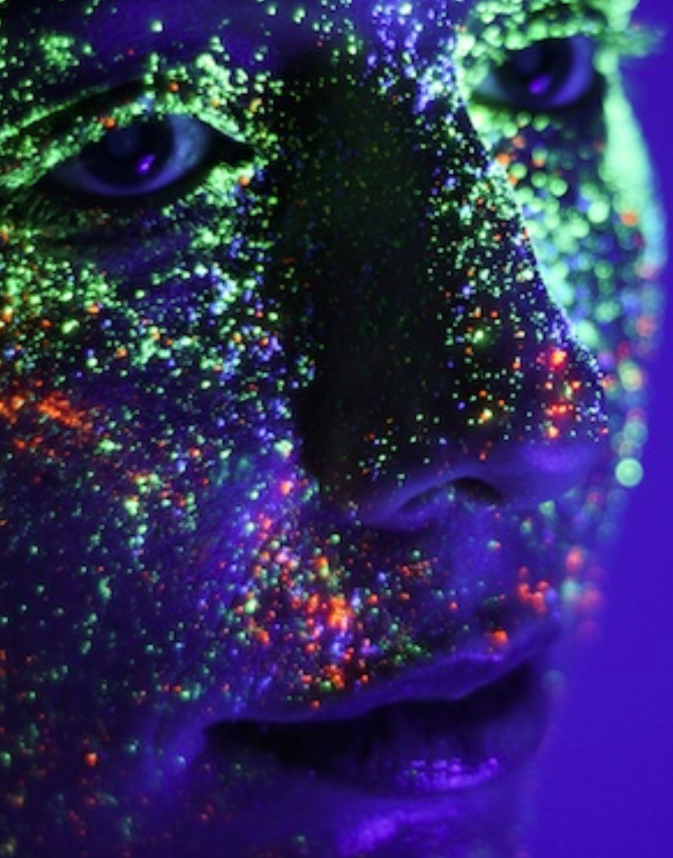In our last post, “Building a Modular, Glowing Tree”, we introduced some of our first visions of how the Tree of Knowledge will come alive. Here are further reflections.
Imagining the Path
The path to the Tree is made with two parallel rows of small plexiglass balls, filled with bioluminescent organisms in a saltwater solution. Set on the desert floor or on small, short posts, these are basically invisible during the day (the balls are transparent, and filled with apparently clear liquid). But when the sun sets, the organisms begin to glow: and so when night falls, a secret path is revealed.
Imagining the Tree
The tree is not alive, but it looks alive, and it looks beautiful. It glows in the night.
The “fruits” of the tree are similarly made of clear plexiglass balls, large and small, filled with bioluminescent fluid: like the path markers, these ornaments also grow magically luminous after dark. Some of the fruit hang low, within reach of visitors; some are high in the branches, creating a kind of canopy.
The Tree itself — the trunk and branches– is a “dead” tree, about 8 meters (~26 feet) high, transported to the site for this project. Only upon close inspection can a visitor tell that it was originally cut into sections, and subsequently reassembled on site using steel rebar.
Imagining the Site and its Activities
At night visitors will be encouraged to “pick” the low hanging fruit, and to take it with them; *Sharing Light* is the essence of the project, as described in more detail in the “Interactivity” section below.
Members of “The Tribe of Light” — easily spotted by their colorful glow-in-the-dark face and body paint — are on hand to help, and to educate through a variety of rites of passage. The overall effect is of an otherworldly, magical place; the goal will be to induce a sense of wonder.




